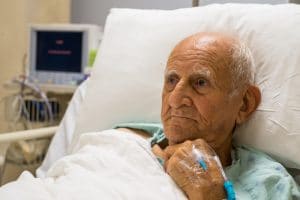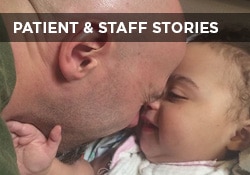This website uses cookies so that we can provide you with the best user experience possible. Cookie information is stored in your browser and performs functions such as recognising you when you return to our website and helping our team to understand which sections of the website you find most interesting and useful.

Susan E. Mazer, Ph.D. Blog
Thoughts and ideas on healthcare
Hi, and welcome to my blog! I'm Susan E. Mazer -- a knowledge expert and thought leader on how the environment of care impacts the patient experience. Topics I write about include safety, satisfaction, hospital noise, nursing, care at the bedside, and much more.
Want to Improve the Patient Experience? Pay More Attention to the Room
April 7, 2016
 Lists, surveys, multiple-choice HCAHPS questions, and operational manuals – the healthcare industry is trying to define and control the patient experience generically.
Lists, surveys, multiple-choice HCAHPS questions, and operational manuals – the healthcare industry is trying to define and control the patient experience generically.
Would we try to define any other human event this way?
I ask this because being a patient creates its own life-world and includes everything that happens (noticed or not), intentional or incidental, clinical or non-clinical.
Because everything matters.
The push to reduce the patient experience down to something manageable and measurable causes us to miss the details that directly influence the quality of the experience.
I have written posts before about the gaps in our narrow view of the patient experience. Thirty-one multiple-choice questions hardly touch the depth of what patients go through when they are ill enough to be in the hospital.
This time, however, I am looking at how we talk about the patient experience and what we exclude as irrelevant to how patients live through their hospitalization.
Giving Patients Hope
When I was in the hospital for 10 days with E Coli Septicemia, the hours were unbearable, and the room, while private, was a prison. There was nothing in it that helped me deal with each endless hour or help me recover from a serious illness. Nothing to give me hope.
The staff did their job. Period. And, how I was doing when they were not in the room was not a topic of discussion beyond medication. In fact, when they were in the room, it felt that they had things to do and I was not on the list beyond their documentation.
The HCAHPS questions don’t address this, other than a general, “Would you recommend this hospital to your relatives or friends?”
So, asking the question, “What we are missing?” is important. What we fail to notice (or what we do notice and don’t consider relevant) is key to improving the patient experience.
Here are 5 suggestions about how to “see” what is happening in a patient’s room:
- Clutter: What is irrelevant that, left alone, could be an accident waiting to happen? A fall? Where is the evidence of competence and safety in the room?
- Lighting: From the patients’ view, what do they see? Is it bright enough for them to recognize who walks in their room? Is there bright sunlight causing glare and discomfort?
- Noise: What can you hear from inside the patient’s room? Is what you are hearing appropriate to create a healing environment for the person you are caring for?
- Comfort: Notice the emotional affect and the mental energy of the patient. Is he/she relaxed, concerned, upset, withdrawn? Notice the bed: blankets in disarray? Do the sheets need changing?
- Line of Sight: From the door of the room, what do you see that the patient sees? Who can see the patient without him/her knowing? Is the view from the bed friendly to recovery? Is it appropriate in respecting the patient’s privacy and dignity?
Being sensitive and responding to what is visible and what is not, what the patient is feeling but not saying, is at the foundation of assuring the best patient experience.
P.S. If you like this post, please do me a favor and share on LinkedIn, Twitter, Facebook, etc. Also to get automatic notices when a new post is published, subscribe (upper right). No spam – just great content. Thanks!










